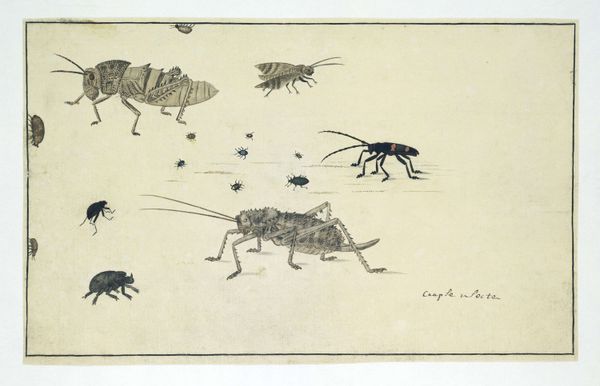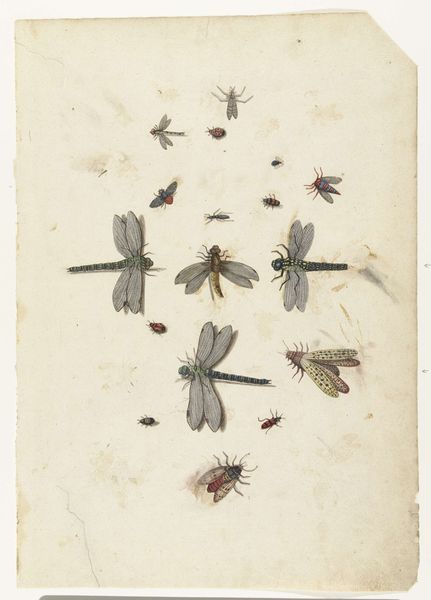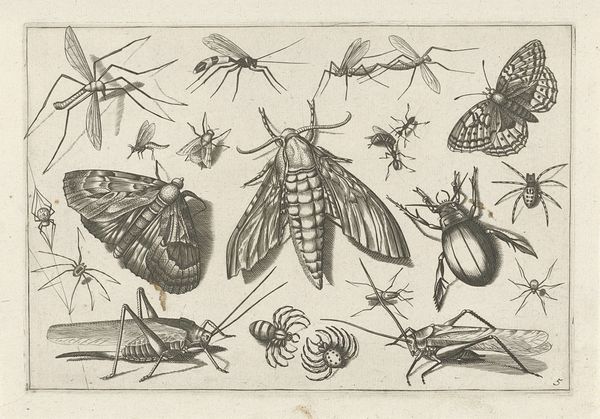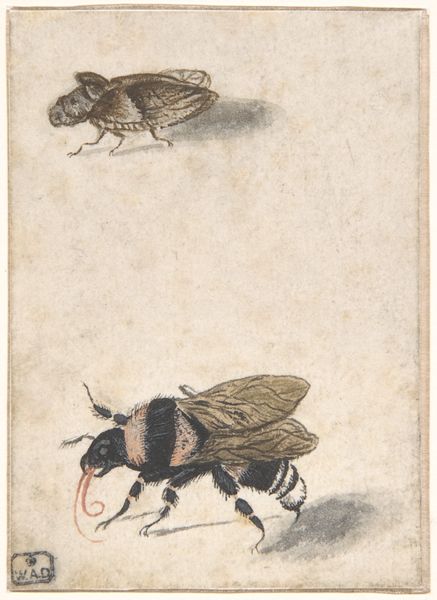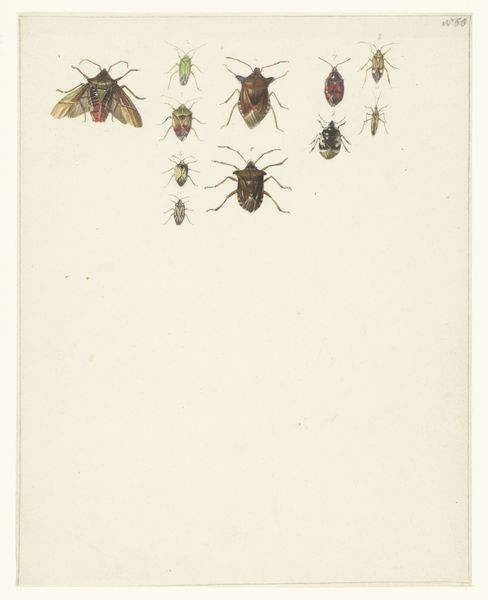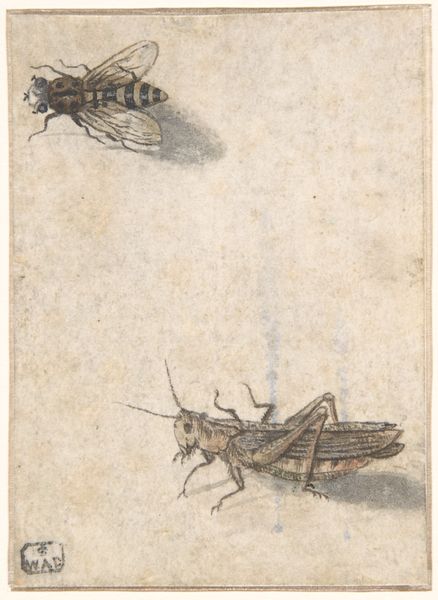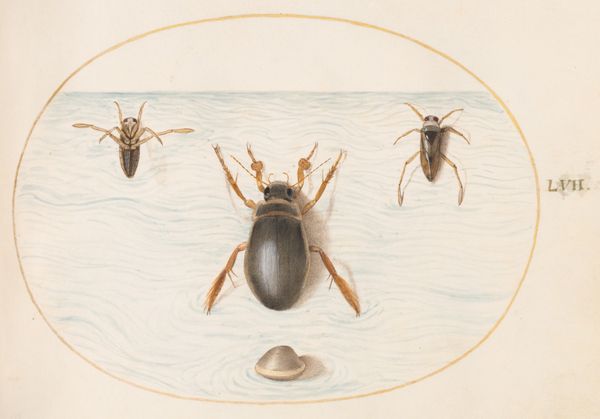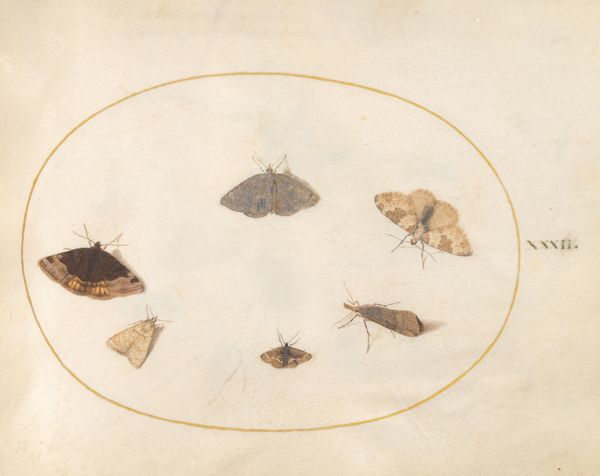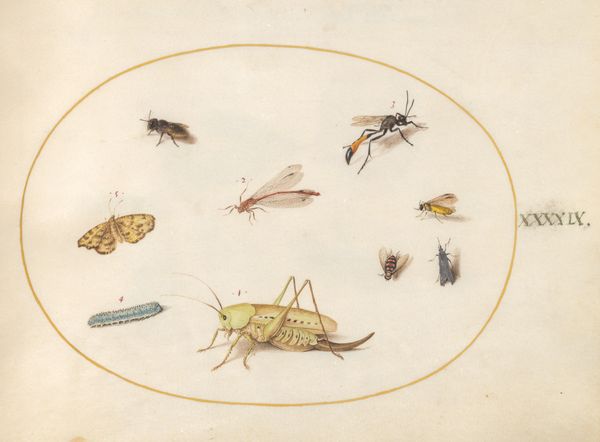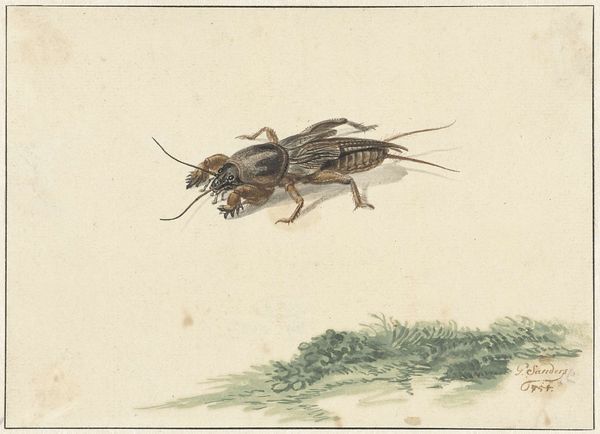
Dimensions: height 117 mm, width 236 mm
Copyright: Rijks Museum: Open Domain
Curator: This work, residing here at the Rijksmuseum, is entitled 'Studies van wespen,' or "Studies of Wasps" in English, attributed to Julie de Graag and thought to have been made between 1887 and 1924. It's a lovely example of naturalist observation rendered in watercolor. Editor: My initial thought is one of…delicacy. The wasps, floating across the paper like tiny thoughts. I feel a surprising tenderness towards creatures I'd usually swat away. Curator: De Graag, a Dutch artist associated with both Impressionism and Naturalism, wasn't just creating an illustration, I think she was engaging with a larger tradition. Insects, their detailed depiction, enjoyed periods of both scientific fascination and symbolic weight, from emblems of diligence to representations of decay. Editor: So, what stories were people telling about wasps then? It feels more than just scientific, somehow. The off-white of the background, almost like aged parchment, hints at an entire narrative lost, doesn't it? Curator: Naturalism sought a more objective, almost scientific rendering of the natural world, but artists rarely abandon subjectivity entirely. De Graag's work, positioned between scientific accuracy and subjective impression, embodies a tension within the naturalist movement itself. Are we seeing wasps, or a feeling *of* wasps? Editor: I agree! They feel less pinned and studied and more captured in a fleeting moment. This piece isn’t simply about representing wasps as biological specimens but capturing their vitality. As a collection, the image captures more their "wasp-ness" than each wasps distinct features. It shows how one thing can embody an idea, even if that specific subject isn’t exemplary of that trait. Curator: I see what you mean. Naturalism also intersected with larger societal concerns. Urbanization, industrialization – all fundamentally reshaping humanity's relationship with nature. These wasps might not only represent species for species' sake, but some romantic, idealized vision of nature threatened by modernization. Editor: It gives us pause to consider all the tiny lives unfolding whether we watch or not, doesn't it? And it asks us what we’d gain if we did. It really does feel so human to assign meaning even to those who wouldn’t think twice of you, let alone the other way around! Curator: It's a deceptively simple work that speaks volumes about seeing the world through art. Editor: Exactly! A reminder that observation is an act of interpretation.
Comments
No comments
Be the first to comment and join the conversation on the ultimate creative platform.
